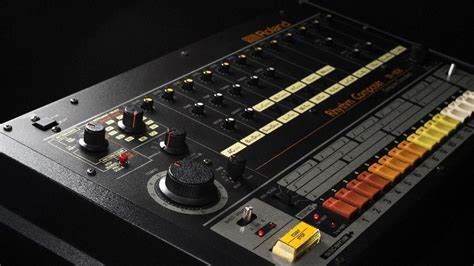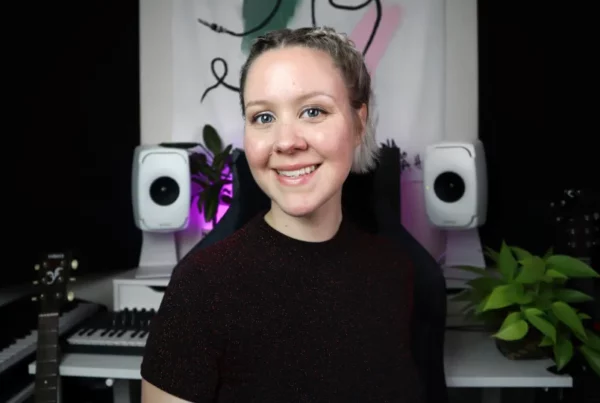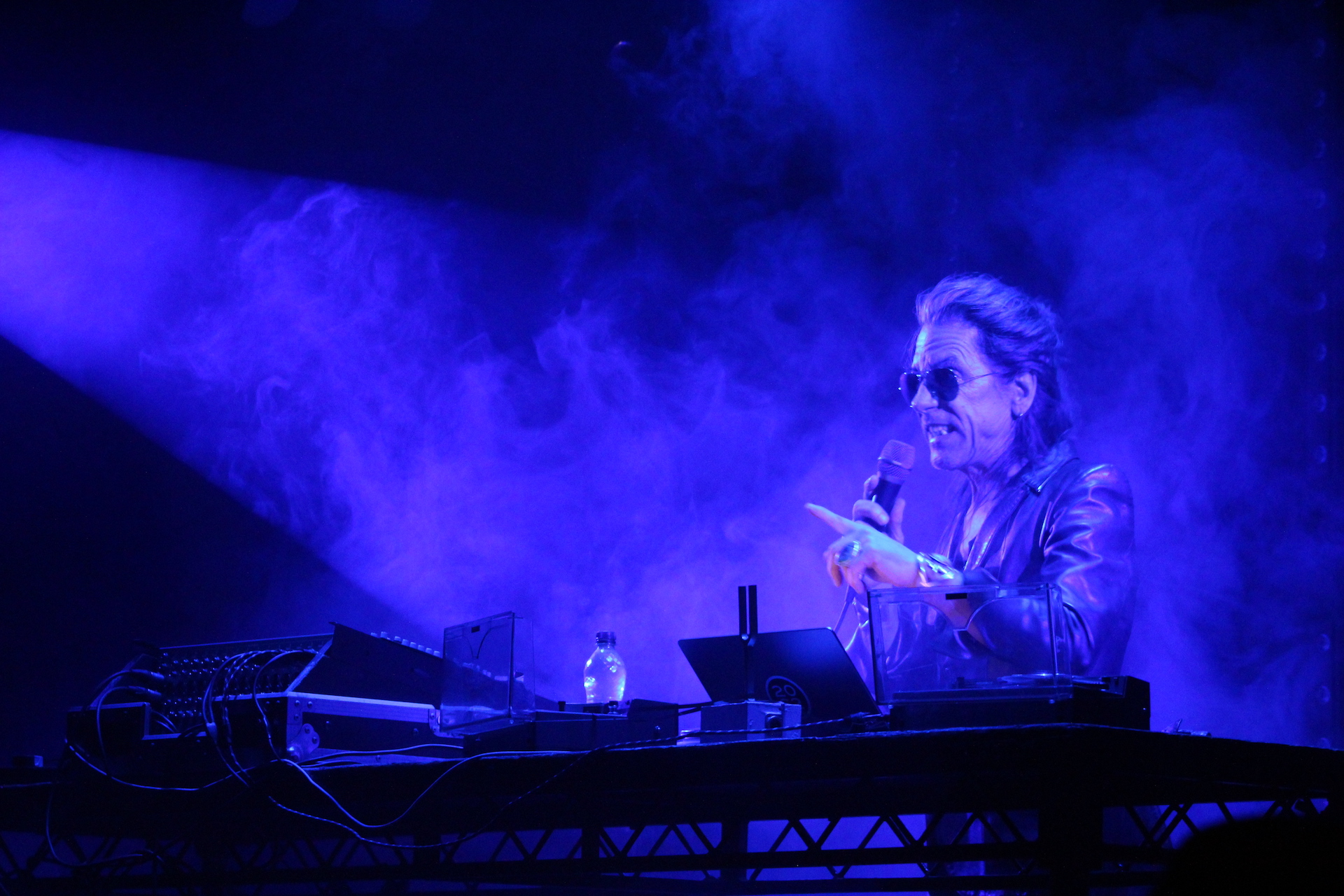
Music production students and staff braved a cold and wet March evening to travel to the Belgrave Music Hall, Leeds, to see a performance by critically acclaimed US ambient composer William Basinski, widely known for his four-album ‘Disintegration Loops’ series (released 2002-3). An evening of ambient treasures saw Basinski headlining a triumvirate of artists including Bradford’s Yorkshire Modular Society and Brighton based Penelope Trappes.
The concert began with, Yorkshire Modular Society who delivered a set of deep analog drones and digital glass like bells using (you guessed it), a modular synthesiser set up. The performance began slowly, evolving into a sonic canvas of generative sounds, which filled the room, testing the limits of the Belgrave sound system, which thankfully was up to the job, as were the excellent sound engineers who were actively engaged with each of the performer’s sets.
Next on was Penelope Trappes. If you haven’t heard her work, I would recommend you take the time to hear her Penelope 1, 2 & 3 albums. Described as, a minimalist, ethereal artist, who uses field recordings, mediations, guitars, synth drones, piano and reverb as a means of exploring issues of mortality, predestination and empathy, I was intrigued to hear this performance. Trappes gathered a growing audience to the stage area, delivering an enchanting set of live voice sampling, reminiscent of Gregorian chants, accompanied by modular synth generated drones, bleeps and sonic textures. As the performance emanated from the venue’s PA speakers and into the (very quiet) audience’s ears, the music by turns delivered intense floor shaking soundscapes and gentle, thought-provoking textures, drenched in delay and reverberation, which added an enormous sense of depth to her music. The audience responded to this sonic journey with a huge round of applause as the set slowly died away into silence.
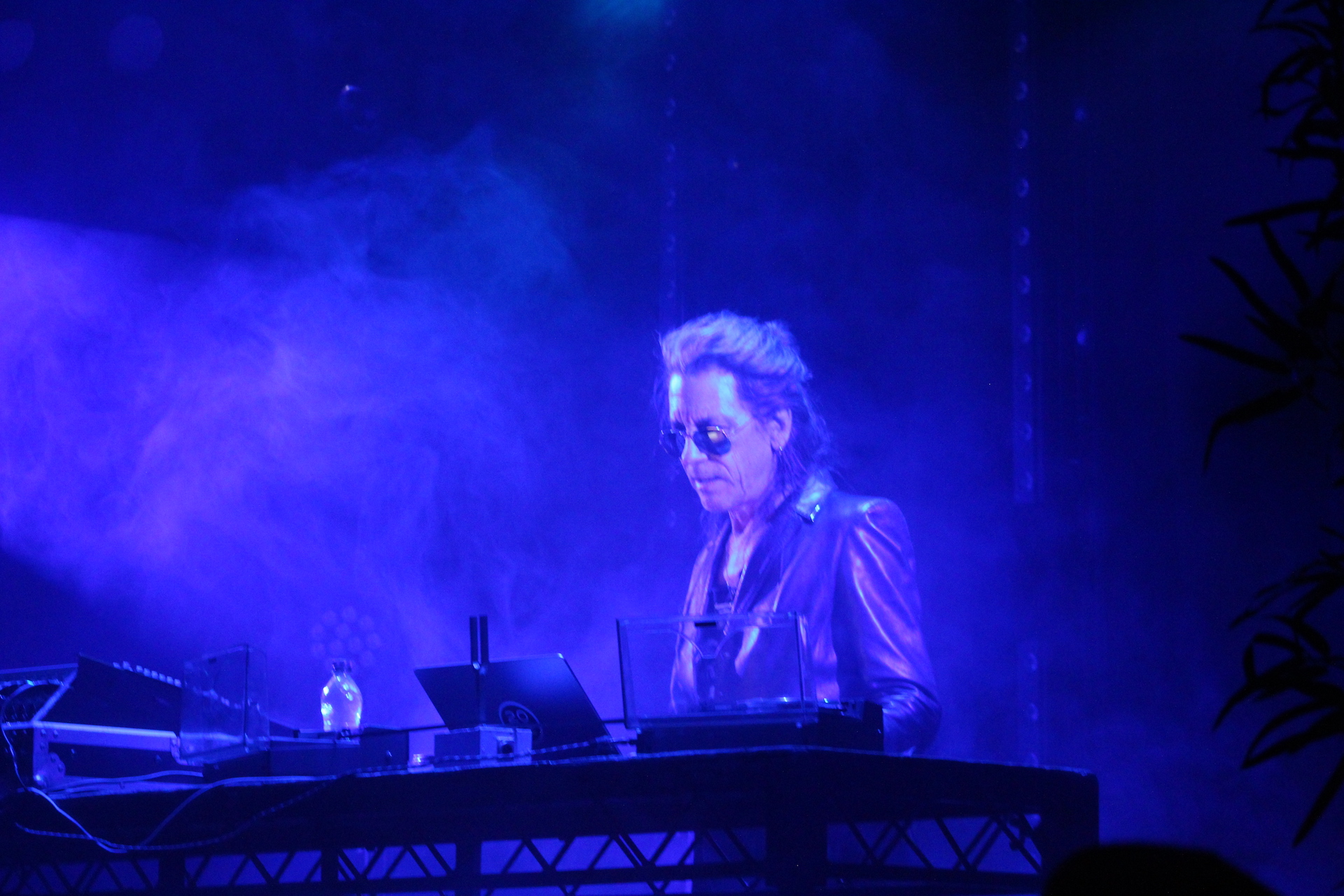
A brief pause whilst there was a stage changeover, affording us all time to clear our heads and ears before the headline act. William Basinski did not disappoint. In fact he changed my perception of ambient performance. Basinski unlike other ambient artists I have seen play live, looks like a rock star and acts like one. He is certainly what one would call a ‘cool dude’, who immediately engaged the audience with an account of his trip to Leeds, acknowledging that his Californian climate was a tad different to a bitterly cold evening in Yorkshire. After a couple of technical glitches, which he brushed off with humour (always a sign of how comfortable a performer is on stage), he soon hooked up his reel-to-reel players and Ableton live and proceeded to take the audience on journey through space and time.
Basinski’s rock star-type qualities were apparent throughout in his stage presence kinetics, at times crossing over into mime, ballet and operatic style performance aesthetics. With his palette of evolving operatic sound textures, slowed down glitched tape loops, reverb and live sound manipulation via Ableton Live and a mixing desk, he pushed the sound system well beyond anything the two previous acts had attempted, giving the sound engineers heart palpitations. The combination of audible, visual and kinetic elements encouraged the audience to tune in, clear any external noise of life away and enjoy the ride for an hour. After During a brief pause, Basinski continued to regale the audience with stories about the Leeds origins of David Bowie’s grandfather and mushy peas and puddings, in a nod to his awareness of performing in a Yorkshire city, which had the desired effect of warming an audience on a cold night.
He then proceeded to offer more sonic treats, this time in a recording of his collaboration with Depeche Mode’s, Martin Gore and composer Alva Noto on a reworking of, David Bowies ‘Subterraneans’ from the 1977 Low album. This recording demonstrated Basinski’s classical music training and the wide range of musical tools he could draw from his (tight leather) trouser back pocket. His saxophone work on this track was musically of a very high level and his feel and sensitivity for the material was perfect. Basinski then left the stage, signifying that his work was done, the message having been transmitted loud and clear, allowing the audience to be immersed for a few minutes more until the final reverb tail of the music died away to a huge round of applause. As the crowd began to quietly and slowly disperse from the venue, the scene reminded me of the feeling one sometimes has upon leaving the cinema after a great film and needs the time to take it all in before being able to talk about the experience. There is no doubt that Basinski writes a great musical script, and his production work is first class. ‘Over and out: a great night had by all…although not quite!
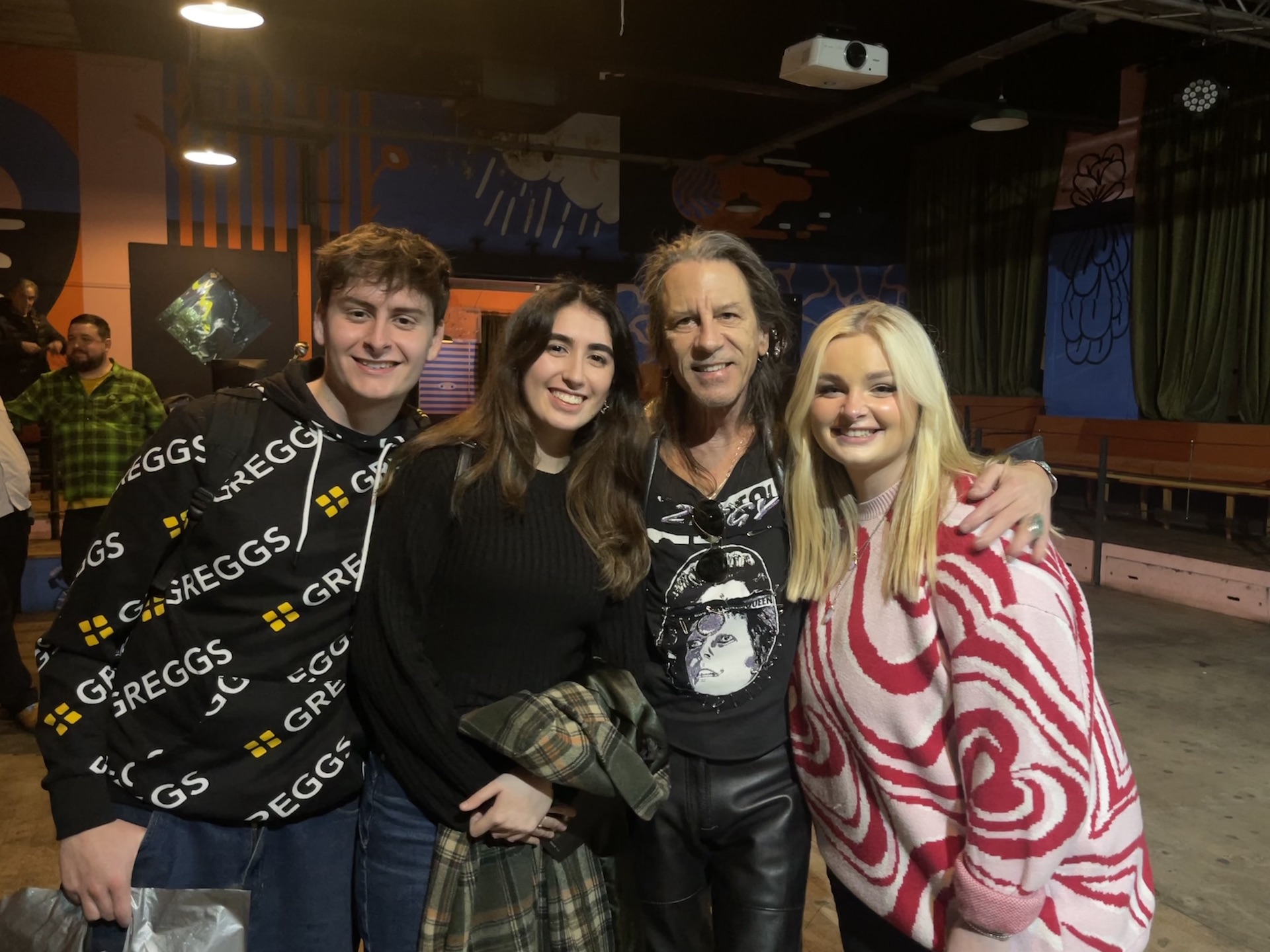
Thankfully the night did not end at this point: let me explain. Several weeks before we knew about the show, I had made contact with William Basinski, asking permission to use the ‘Disintegration Loops’ to carry out an experiment for a module I was teaching, called Interactive Music. I was thrilled to receive a positive response, giving us permission to do the experiment (it always pays to ask and be respectful!) After discovering he was fortuitously playing in Leeds and securing tickets, I asked William if he would be willing to meet our party after the show, to which he kindly agreed. Our music production students were as result treated to 20 minutes of conversation with the great man, who shared with us his creative and technical practice, amidst wise tidbits of advice to ‘follow your dreams’. This was a wonderful and appreciated moment.
‘What more could we have asked for?’, I asked myself at the end of the night. After all we were treated to an eclectic mix of music by some of the best modern ambient composers in the world, followed by a face-to-face meeting with William Basinski himself. I will tell you what I would have asked for: a chair! The Belgrave Music Hall is normally used for band type shows, for which audiences usually remain standing, which is not ideal for an ambient gig lasting 3 hrs, especially as such performances are generally considered to be immersive listening experiences, which require a degree of relaxation, something which is difficult when your legs and back could go into painful spasm at any moment! This is a minor criticism in the circumstances though: the performances were excellent and the venue itself is a well-managed acoustic space with professional live sound. However, it is something to keep in mind when staging concerts of this nature in the future.
The physical issues aside, this was a unique and memorable night, worth 5 stars…and then some. Watch this space to read about how the Disintegration Loops experiment goes.
Words: Dave Young and Mark Marrington
Images: Abi Shaw and Jake Lavender

